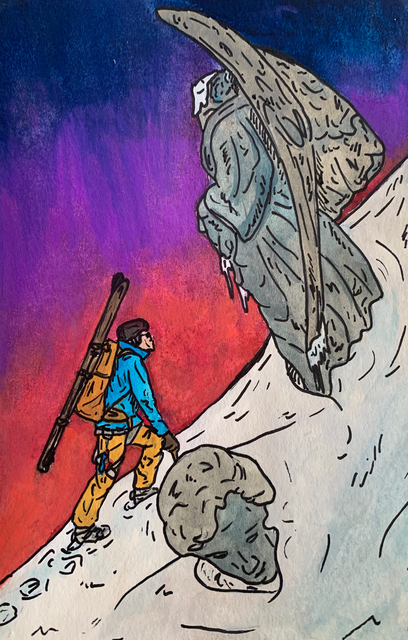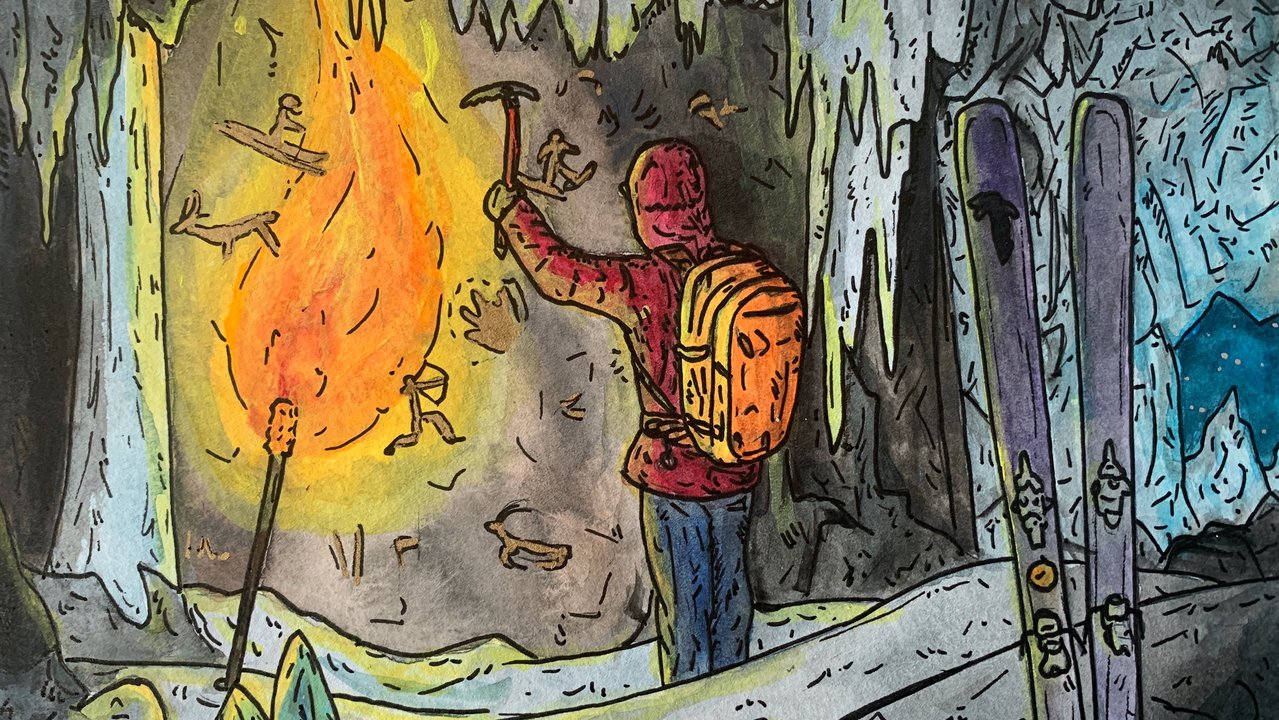The longer I spend skiing the more the learning process reminds me of an idea from classical education called the “Trivium.” The Trivium is a framework for learning that divides the pursuit of knowledge into three facets: Grammar, Logic, and Rhetoric. This distinction was established by Plato, but has continued to evolve throughout history, and was especially popular during the Middle Ages. While it might not be the most educational sound framework, it provides an interesting lens to view skiing through.
In educational terms, the Grammar Stage of the Trivium is the period when younger children learn to use words. It’s the foundation that all other knowledge is built on. So it covers building a vocabulary of words, learning to spell those words, and learning the rules that define how you can put them together into a sentence.
The Logic Stage takes those words and sentences and builds on that fondation to teach students how to use them accurately. This is when they’re taught how to build a sound argument, and how to identify a fallacy. It’s an essential part of the learning process because it creates a framework for how and when to use the raw materials that the Grammar Stage instilled in us.
Finally, the Rhetoric Stage delivers the tools and practice needed to make those logical arguments and constructions palatable. This is when students learn how to make an argument that is not just true and correctly phrased and spelled, but is also emotionally compelling. Rhetoric helps us build the bare bones of an outlined argument into a compelling message. It transforms a logical syllogism into a speech.
I like to think of the outcomes of those three stages in terms of Knowledge, Discernment, and Wisdom. We build knowledge, we learn the discernment to use that knowledge accurately, and then we learn the wisdom to present it beautifully.
And that’s all very nice from an educational perspective, but what does it have to do with skiing?
Well, for many folks, skiing follows the same path. We start out learning what we’re supposed to do, the techniques that all skiing is built on. We get our weight forward, learn to french fry and pizza, learn to lean over and initiate a turn. With those foundations built, we learn how to use them together. We move into the Logic Stage learning to link turns and where a snowplow is appropriate and where it is not. We learn to adapt those fundamentals to different conditions and terrains. We take those raw factual fundamentals and build an understanding of when we should use which ones.
I spent most of the last five seasons in this logic stage, learning when I needed to make a hop turn, and when I had enough room to pivot through a more traditional one. Figuring out how to absorb a mogul and flow into the next trough, or when it was appropriate to gap off the highest point and reach for a transition far down the hill. I knew what I needed to do, but it still wasn’t natural, wasn’t clean. I could ski challenging lines without sideslipping, but I needed to stop and think through things before I dropped into the choke. I was going through the right motions, but none of it was fluid, none of it was compelling. And I didn’t see a natural way to progress past this. I figured it was just a problem of confidence, of needing to “sack up and send it” instead of thinking through every motion I made in the mountains.
But then halfway through last season, something started to click. I found it easier to get out of my head and just ski. I wasn’t thinking through every turn I made, trying to make sure I could complete it without falling. Instead I was focusing on initiating each turn fluidly, and then pushing through the apex powerfully before I flowed into the next. I’m not sure anyone watching me ski would have noticed, but I could feel it. I was focusing on how my skiing looked and felt, not just on the outcome. I was flirting with rhetoric.

If the rhetoric stage has an exact analogy in skiing it’s probably the idea of style. Style is what makes a trick or a turn special. It doesn’t change what fundamentals went into a trick, or what that trick factually is. A 360 is a 360, whether it’s penciled out and awkward, or smooth and steezy. But style is what makes a skier compelling. It’s the x factor that makes watching someone feel special or unique in some way. Some skiers are poetic in their style, dancing with the mountain with a free flowing grace. Some are aggressive, intense, like a fiery revival preature exhorting his audience. Others we dub robotic, often a sign that their fundamentals are solid, their execution is perfect, but there’s no self expression visible to us as an audience. Style is subjective, and so is rhetoric, what one person finds compelling might feel grating and disingenuous to another.
The learning curve that skiing offers is a big part of the draw. We build the knowledge of how to drive my skis better, the discernement to understand what techniques are appropriate for given conditions, and the wisdom to tie it all together into something compelling. This opportunity to grow through the course of your lifetime, to become a different person through how you ski, is one of the best parts of the sport.
But so often we just talk about it in simple terms of “progression.” And that progression is portrayed as a one dimensional amalgamation of going bigger, doing more complex tricks, and skiing more committing terrain faster. But there’s more to it than that. Progression can just be about making your skiing more compelling, more beautiful, more expressive. Progression can come from skiing the same runs you always have, at the same speed you always have. All it takes is putting a little bit more of yourself into those turns, focusing on experiences beyond making sure that your edges are in the right place.
I still want to learn new tricks, ski faster, go bigger. But more than that I want to ski better. I want to ski more fluidly. I want to ski more like myself. Maybe Plato had an important part of this whole skiing thing figured out.


Comments